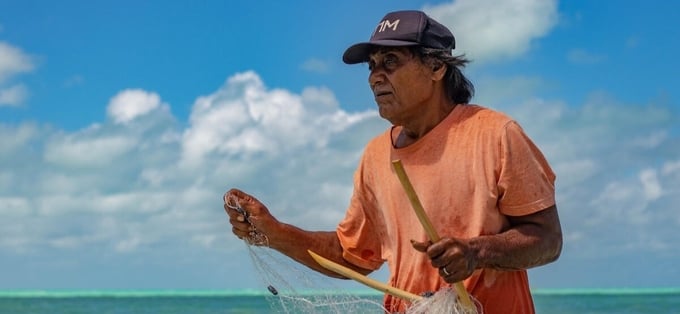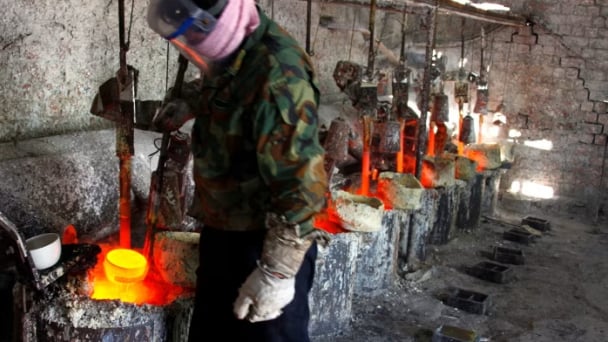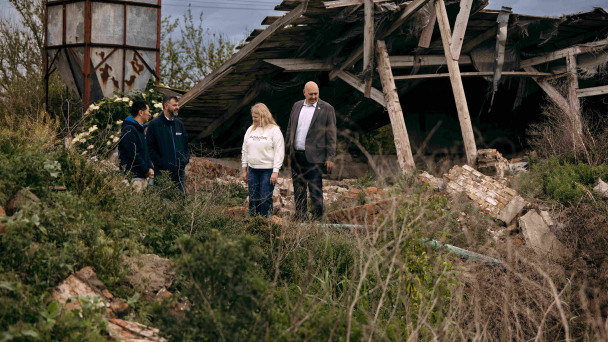June 19, 2025 | 16:53 GMT +7
June 19, 2025 | 16:53 GMT +7
Hotline: 0913.378.918
June 19, 2025 | 16:53 GMT +7
Hotline: 0913.378.918

The Western Central Pacific, home to the largest number of artisanal and small-scale fishers globally, is one of the most complex regions for fisheries management. Photo: FAO/Karianako James.
The Food and Agriculture Organization of the United Nations (FAO) today revealed the details of a major update to the methodology of the State of Stocks Index (SoSI) at the Honiara Summit in Solomon Islands (24-27 February).
This marked a significant step forward in tracking and managing fisheries more efficiently, supporting global efforts to promote effective management of the ocean and its resources.
Besides details of the updated methodology, results from FAO Fishing Areas 71 and 81, both located in the Pacific, were presented. Full results will be published later this year in a Report on the State of World Fishery Resources, to be launched at the UN Oceans Conference in Nice, France.
Methodology developments
The State of Stocks Index is computed every two years and presented in the State of World Fisheries and Aquaculture (SOFIA) flagship report. The enhanced methodology has been updated to deliver a more precise and comprehensive analysis of the state and health of stocks, and adopts a three-tier assessment approach, ensuring greater adaptability based on data availability and quality across different fisheries. A key improvement is a significant expansion in the number of assessed stocks in each FAO Major Fishing Area from about 500 to approximately 2 600, offering high-resolution insights into the state and health of fishery resources at both regional and global levels.
The methodology was built and tested in 19 workshops and consultations that engaged 200 national and regional fisheries institutions and stakeholders from 92 countries. More than 650 scientists and policy analysts contributed to refining and validating the findings within a collaborative framework. Additionally, the approach enhanced capacity in resource-limited regions by working closely with scientists to assess the state of their resources. Endorsed at the 36th session of the FAO Committee on Fisheries, the updated methodology will help regional scientists and fisheries institutions assess fisheries more effectively, providing policymakers with stronger data to implement targeted sustainability policies at regional and national levels.
“These methodological enhancements are part of ongoing efforts to ensure that global fisheries management decisions are informed by the best available science, balancing conservation efforts with food security needs,” Manuel Barange, FAO Assistant Director General and Director of the Fisheries and Aquaculture Division, said during the summit.
Area 71, Western Central Pacific: a more accurate picture reveals urgent sustainability challenges
The Western Central Pacific, home to the largest number of artisanal and small-scale fishers globally, is one of the most complex regions for fisheries management. Covering the exclusive economic zones (EEZs) of 23 countries and territories, this area has long faced challenges in data collection and stock assessments.
Until 2021, only 43 stocks were assessed in this area; under the updated methodology, data from 265 stocks are now incorporated, providing a more accurate and representative picture. SoSI now estimates that 52.5 percent of assessed stocks are biologically sustainable, down from 80 percent in 2019, and 77 percent in 2021. However, this decline does not necessarily reflect worsening stock conditions but rather a more precise and comprehensive assessment that is more accurate than previous estimates.
The findings highlight persistent challenges in key fisheries, particularly in Southeast Asia, where skipjack and yellowfin tuna face the impacts of climate change and overcapacity. The analysis also reveals that small pelagic fish, coastal reef species, and sharks in Southeast Asia face significant declines due to overfishing, habitat loss, and weak enforcement. Compounding these issues is the limited access to reliable data which hinders effective stock assessment and management. Addressing these data gaps is critical to strengthening data collection, governance, and sustainable fishing practices across the region.
Despite these challenges, the Western and Central Pacific Fisheries Commission (WCPFC) has played a critical role in ensuring the sustainable management of different stocks of key tuna species, including skipjack tuna, yellowfin tuna, albacore tuna, and bigeye tuna. These species drive the area’s tuna industry and remain sustainably managed thanks to science-based regulations, catch limits, and monitoring programs. Northern Australia’s shark fisheries also remain among the best-managed in the region.
Area 81, Southwest Pacific fisheries: Clearer picture, stronger sustainability
In contrast to the sustainability picture in Area 71, a more comprehensive dataset and expanded stock lists reveal a stronger sustainability outlook for Area 81 in the Southwest Pacific, which includes the EEZs of New Zealand and part of Australia (the state of New South Wales), as well as extensive areas of high seas.
The updated methodology estimates that 85.5 percent of the assessed stocks are biologically sustainably fished, slightly higher than the 75.9 percent in 2021, when the old methodology was in use. The rise reflects an increase in the number of stocks evaluated – 166 rather than the previous 29 combined stock evaluations.
Area 81 shows a high variability in stock status. While some stocks, such as blue grenadier and rock lobster, are thriving, others like orange roughy and striped marlin remain overfished.
Some fisheries, such as the New Zealand scallop and pipi wedge clam, have been closed due to low stocks. As catch limits restore fish stocks and productivity improves, this region is setting a global benchmark for sustainable fisheries management.
(FAO)

(VAN) Extensive licensing requirements raise concerns about intellectual property theft.

(VAN) As of Friday, a salmonella outbreak linked to a California egg producer had sickened at least 79 people. Of the infected people, 21 hospitalizations were reported, U.S. health officials said.

(VAN) With the war ongoing, many Ukrainian farmers and rural farming families face limited access to their land due to mines and lack the financial resources to purchase needed agricultural inputs.

(VAN) Vikas Rambal has quietly built a $5 billion business empire in manufacturing, property and solar, and catapulted onto the Rich List.

(VAN) Available cropland now at less than five percent, according to latest geospatial assessment from FAO and UNOSAT.

(VAN) Alt Carbon has raised $12 million in a seed round as it plans to scale its carbon dioxide removal work in the South Asian nation.

(VAN) Attempts to bring down the price of the Japanese staple have had little effect amid a cost-of-living crisis.